Earth is surrounded by thousands of Near-Earth Objects, a few of these are potentially hazardous, and fewer still which are classified as planet killers. An impact from the latter carries implications as severe the name suggests. Clearly, we need a method of diverting such objects. In fact, it isn’t hyperbole to say, the survival of our species may depend on it.
News stories about massive objects skirting close to Earth are pretty common in the media, as a timely example, in April news organisations across the globe reported a mile-wide asteroid passing with just 3.9 miles of our planet. Fortunately, the rock identified as (52768) 1998 OR2, posed no real impact threat.

Yet, our planet is scarred with the evidence of previous collisions with such objects. The most frequently thought of example is the impact that wiped out the dinosaurs 66-million-years-ago, the scale of which can be seen by examining the Chicxulub crater centred on the Yucatán Peninsula in Mexico.
The dinosaur destroying asteroid is estimated to have been around 10–15 km in width, but the crater it created was 150 km in diameter and the debris in threw into the atmosphere blacked out the Sun for months as well as triggering massive tidal waves which battered the entire continent of America and other deadly secondary effects.
Even looking beyond the surface of our own planet, the Moon’s geology is strongly shaped by a history of asteroid impacts, as are the faces of other planets in the solar system.
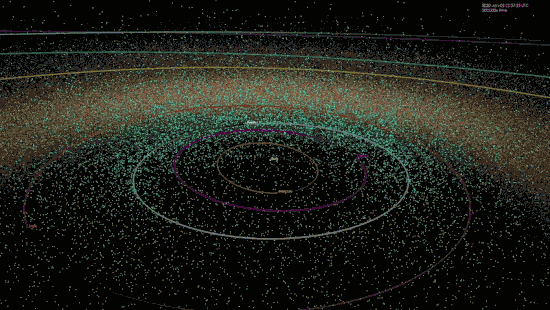
The truth is the Earth exists within the vicinity of thousands of Near Earth Objects (NEOs), many of which carry the risk of colliding with our planet. If one of these asteroids — referred to as Potentially Hazardous Objects (PHOs) —did strike our planet, it could cause devastating effects including massive property and infrastructure damage, as well as significant loss of life. Within the population of PHOs is a smaller population of objects which could, much like the asteroid that wiped out the dinosaurs and 75% of all other animal life, trigger a major extinction event.
It should be abundantly clear that developing a method of mitigating the impact of one of these objects by knocking off its collision course is imperative. Asteroid mitigation has been identified as one of NASA’s ‘Space Technology Grand Challenges’ — problems that require cutting -edge scientific solutions. Indeed, many other institutions across the globe are working on their own mitigation strategies, each of which comes with its own unique pros and cons.
Should the possibility of an asteroid impact arise, the governments of Earth will be faced with a stark choice. Depending on a number of factors and characteristics they will have to choose between an instantaneous approach or a more gradual method .
Some of these methods and their potential successes and failures are listed below, starting with the more extreme, blunt solutions to asteroid mitigation.
The direct approach
There is probably nothing that constitutes ‘direct approach’ more than tossing a nuclear explosion at a problem. Thus, it may come as no surprise that many research hours have been devoted to devising a scheme in which an asteroid can be diverted with the aid of a nuclear weapon.
The stark truth of the matter is, if the NEO is spotted on a collision course with Earth with less than 10 years warning, direct intercept with such a device may well be our only hope of diversion. Further to this, these ‘short lead time’ encounters are currently the most likely probable scenarios involving Earth and an encounter with a PHO.
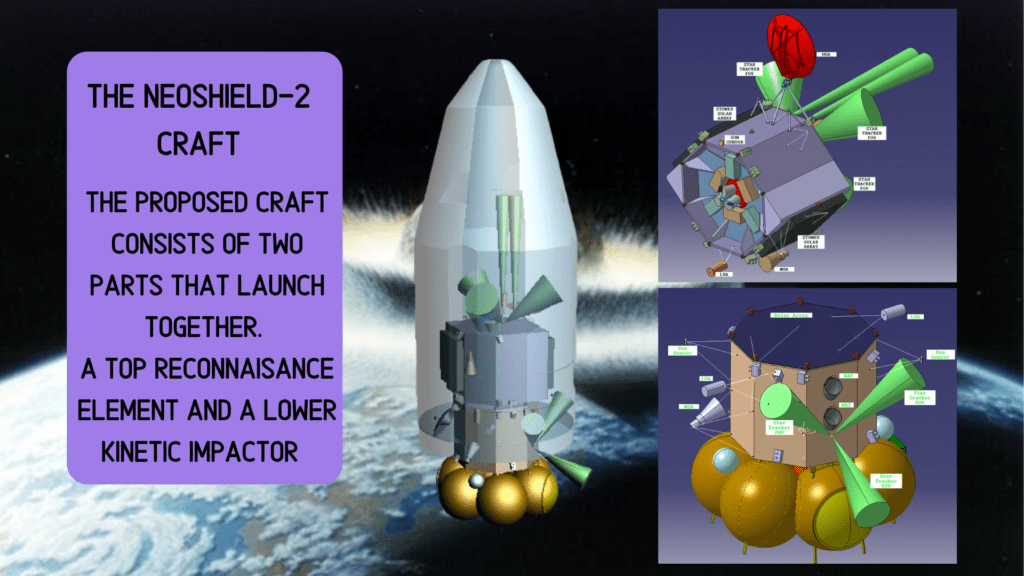
Hitting an asteroid with a nuclear weapon obviously provides mitigation by imparting energy to the object to divert it, even if only slightly. Another way of doing this is by slamming the PHO with another object. Instead of imparting nuclear energy, this kinetic impactor is a spacecraft that hits the PHO at a high velocity transferring momentum to it changing its velocity and hopefully diverting its course.
Interestingly, this method requires the use of a reconnaissance craft to first map the characteristics of the PHO, such as its orbit, size, shape and rotation, even its chemical make-up so that the impact can be perfectly calibrated. One kinetic impactor system currently being researched is the NEOShield-2, which involves the reconnaissance craft launching together with the impactor. The two craft, initially stacked together, will separate with the reconnaissance craft hopefully reaching the asteroid first, and the impactor following through when details are collected.
In March last year, NASA unveiled early plans for a ‘best of both worlds’ mission that unites a kinetic impactor and nuclear device for the purpose of asteroid diversion. The Hypervelocity Asteroid Intercept Vehicle (HAIV) mission craft consists of a fore-body kinetic impactor which smashes into the asteroid, and an aft-body which when deposits a nuclear charge. The beauty of this arrangement is that if the impactor can create a crater in the asteroid, the nuclear blast will occur beneath the surface of the NEO, imparting more energy than a glancing blow could.
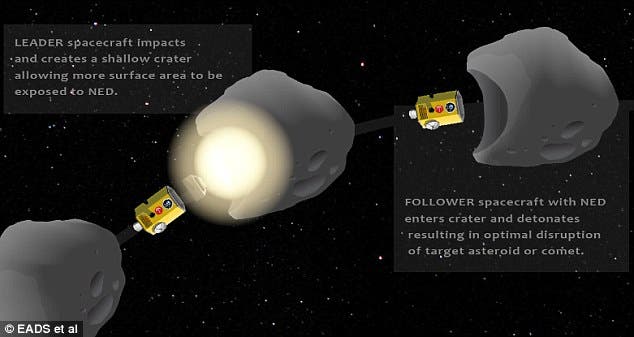
Both of these missions are still at least ten years from reaching a viable testing-stage. And there is another, deeper problem.
The danger of any direct impact mission is that it could fragment the asteroid in question, especially as some asteroids are merely a loose conglomeration of smaller bodies. This could result in Earth being bombarded with a multitude of meteors — each causing untold destruction. Even worse, if the NEO in question has a core of pure iron, even a nuclear device/ kinetic impactor double-punch is unlikely to divert it.
This is the case if we have little notification of an asteroid’s impact — less than ten years, what if space agencies are granted more time to divert the PHO?
Diverting asteroids — the gentle way
Methods that require a long lead time tend to be more gentle than short-lead time techniques, and interestingly, also tend to exploit our understanding of physics and energy way beyond that of kinetic energy alone.
Perhaps the most well-known long-lead-time diversion method involves using gravitational energy to alter the orbit of a NEO. It’s also the most ‘gentle’ of even the long-lead-time methods, not even requiring contact with the asteroid.
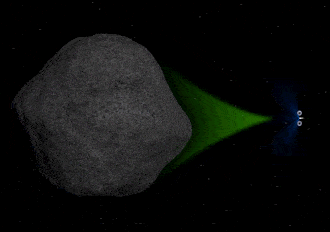
The idea is to place a spacecraft in orbit alongside a PHO over a period of many years or even decades. The gravitational influence of the gravity tractor gradually pulls the asteroid off course, thus preventing a close encounter with the earth. The gravity tractor method would work on asteroids of all compositions, and shapes, even if they are collections of smaller bodies, loosely gravitationally bound. There is a limit to the size of an asteroid that could be gravitationally pulled, however, making this a technique that is unlikely to tug a planet killer.
The theory behind gravity tractors is so robust and the control it allows is so precise, that it has even been suggested that the method could be used to place asteroids in positions where they could be beneficial for humanity — allowing them to be used for research or even commercial purposes.
A less ‘contactless’ version of the gravity tractor approach, involves using an actual physical tether to divert the asteroid to a higher orbit. The tethered object would be smaller than the NEO and could either be a spacecraft launched from earth, or another NEO. The concept behind this method is that attaching the larger body to a smaller one changes the centre of mass of the body and thus adjusts its orbit.
One potential drawback of the system is that is likely to require some pretty intensive surface operations, especially if the tether is to be attached to two NEOs. It also carries the risk of the tether becoming tangled, meaning before any operation was undertaken the motion of the PHO would have to be known precisely.
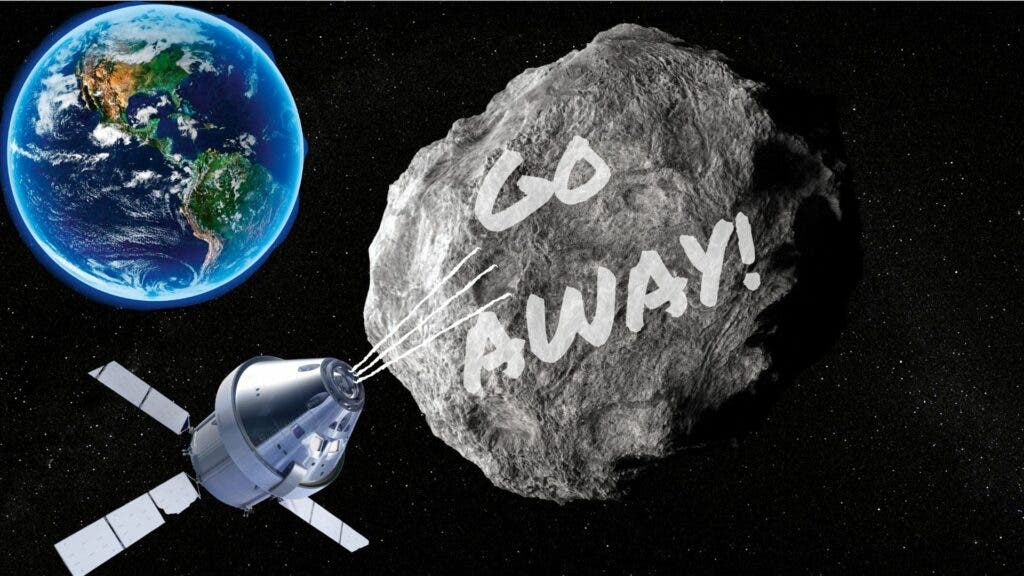
One of the most ‘out there’ ideas to divert an asteroid on course to strike the Earth involves spraying a thin layer of powdered paint on one side of an asteroid and allowing radiation from the Sun to alter the asteroid’s orbital path. The paint coating changes the amount of radiation reflected by the asteroid’s surface. This leads to unequal heating within the body, and thermal particles being ejected more strongly on one-side than the other. As a result, a strong net force is created which over the course of several years can shift the asteroid’s orbit.
Again, these methods which are just the tip of the iceberg in terms of mitigation strategies, are still very much in the developmental phase, and moving them into the test stages could be a matter of some urgency.
It’s a matter of ‘when’ not ‘if’
“An asteroid collision would be something against which we have no defence… This is not science fiction; it is guaranteed by the laws of physics and probability.”
— Stephen Hawking, Brief Answers to Big Questions, [2018].
If 2020 teaches humanity nothing else it should impart the lesson that we are simply not ready to deal with some of the hazards that nature can and will throw at us. If the strategies put in place to deal with a potential pandemic strike us as slap-shot, underwhelming and inadequate, the provisions taken thus far to prevent an asteroid strike fall considerably short of even this.
The only real hope we have of diverting a PHO as things currently stand is spotting it well in advance and getting a satisfactorily long-lead time. But still, there is very little in the way of infrastructure in place to deal with such an eventuality.
Just as historians may one day look back at the MERS and SARS outbreaks as stark warnings of a coronavirus pandemic that governments around the world failed to take heed of, so too they may consider the close brush with 99942 Apophis as a warning to prepare for asteroid incursion.
The NEO with a diameter of 370 meters caused concern in December 2004 when observations indicated there was a 2.7% chance that on a future sweep past our planet in April 2029, it would strike the planet. Estimations changed between 2004 and 2006, first appearing that 99942 Apophis would miss both the Earth and the Moon, with the possibility that during the 2029 encounter it would pass through a gravitational keyhole, that would result in it impacting the planet in 2036.
Fortunately, by 2008 it had been determined that the asteroid would both miss the Earth and the 1km gravitational keyhole that would shift it onto a collision course in 2036. As it currently stands, 99942 Apophis has a 1 in 150,000 chance of colliding with our planet in 2068. Pretty slim. But, unfortunately, 99942 Apophis is hardly the only PHO out there, and there are many that we have yet to discover.
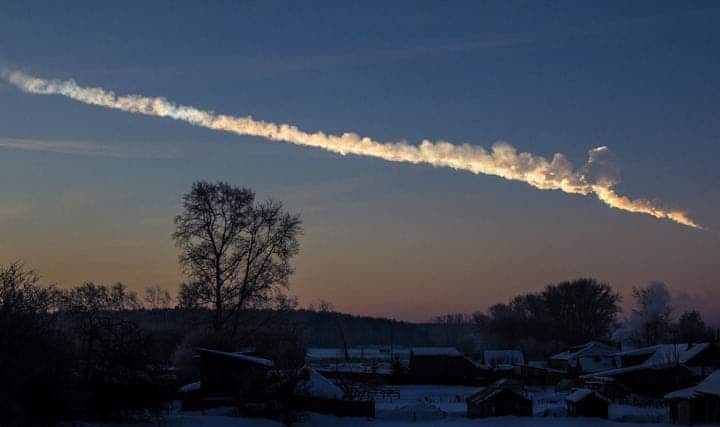
The Chelyabinsk meteor provides a stark example of such an unknown object. The object with a 20-meter diameter entered Earth’s atmosphere over Russia on 15th February 2013. Due to its high velocity and shallow entry angle, the meteor broke apart in an airburst at around 30 km over the Chelyabinsk Oblast. The energy it released was so potent that the airburst was brighter than the Sun, and could be seen from a distance of 62 miles away.
Over 1,500 people were injured as a result of the blast.
Should it have actually hit the surface of our planet, impacting in a region with a population of 3.5 million people, it would have been the equivalent of the detonation of around 500 kilotonnes of TNT — around 33 times the energy released by the detonation of the atomic bomb that devastated Hiroshima.
We had literally no idea it was there. We still don’t know where it came from.
The real key to asteroid mitigation is increased investment in space science and infrastructure. Developing mitigation strategies isn’t enough, as Chelyabinsk shows, we need to also focus on detection methods.
Hopefully, this is a lesson that won’t be learned in hindsight, because as Hawking predicted in his final work shortly before his death in 2018, this is inevitable. And as estimates made using Earth’s history as a guide, collisions with an object of the size of 99942 Apophis occur roughly once every 80,000 years. That means we are currently well-overdue.
Sources and Further Reading
Sugimoto. Y, Radice. G, Ceriotti. M, et al, Hazardous Near-Earth asteroid mitigation campaign planning based on uncertain information on fundamental asteroid characteristics, Acta Astronautica, [2014]
Foster. C, Bellerose. J, Mauro. D, et al, Mission concepts and operations for asteroid mitigation involving multiple gravity tractors, Acta Astronautica, [2013]
Lu. E, The Project B612 Concept, ARC, [2012]
Dearborn. D, 21st Century Steam for Asteroid Mitigation, ARC, [2012]
Spitale. J. N, Asteroid Hazard Mitigation Using the Yarkovsky Effect, Science, [2012]
Belton. M. J. S, Morgan T. H, Samarasinha N. H, Yeomans D. K, Mitigation of Hazardous Comets and Asteroids, Cambridge University Press.
Hawking. S, Brief Answers to Big Questions, Hodder & Stoughton, [2018].
Kinetic impactor
The principle of the kinetic impactor mitigation method is that the NEO or Asteroid is deflected following an impact…www.neoshield.eu
NASA – National Aeronautics and Space Administration
By providing strategic guidance, the Strategic Integration (SI) Office in collaboration with Stakeholders from the…www.nasa.gov
An Innovative Solution to NASA’s NEO Impact Threat Mitigation
An Innovative Solution to NASA’s NEO Impact Threat Mitigation Grand Challenge and Flight Validation Mission…www.nasa.gov